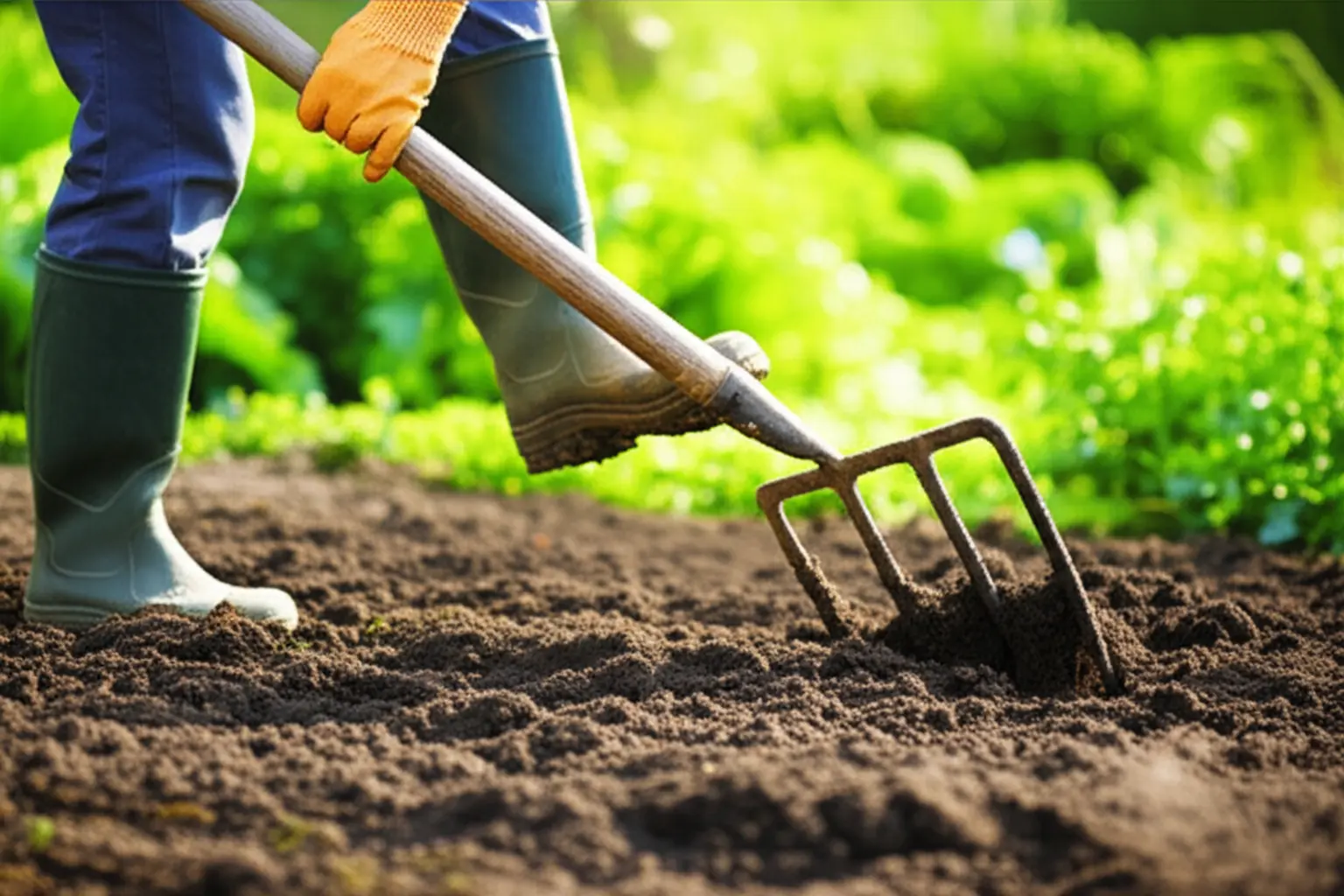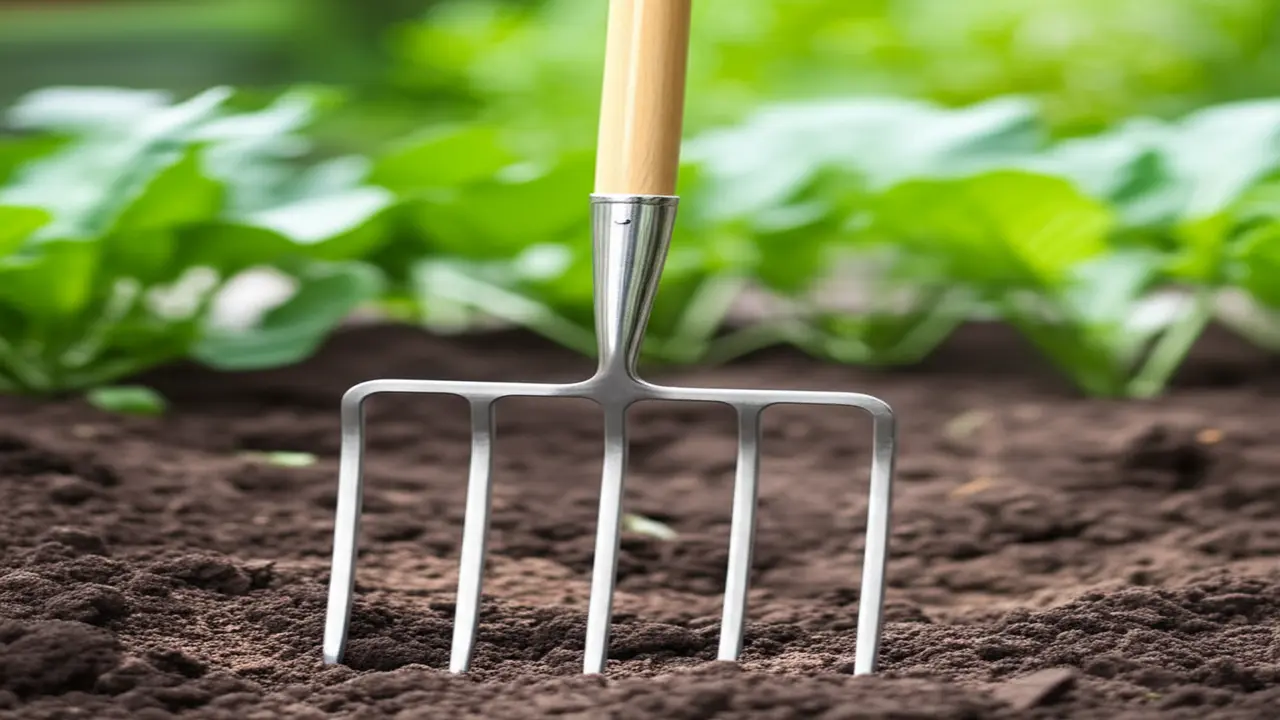
1. Understanding the Garden Fork
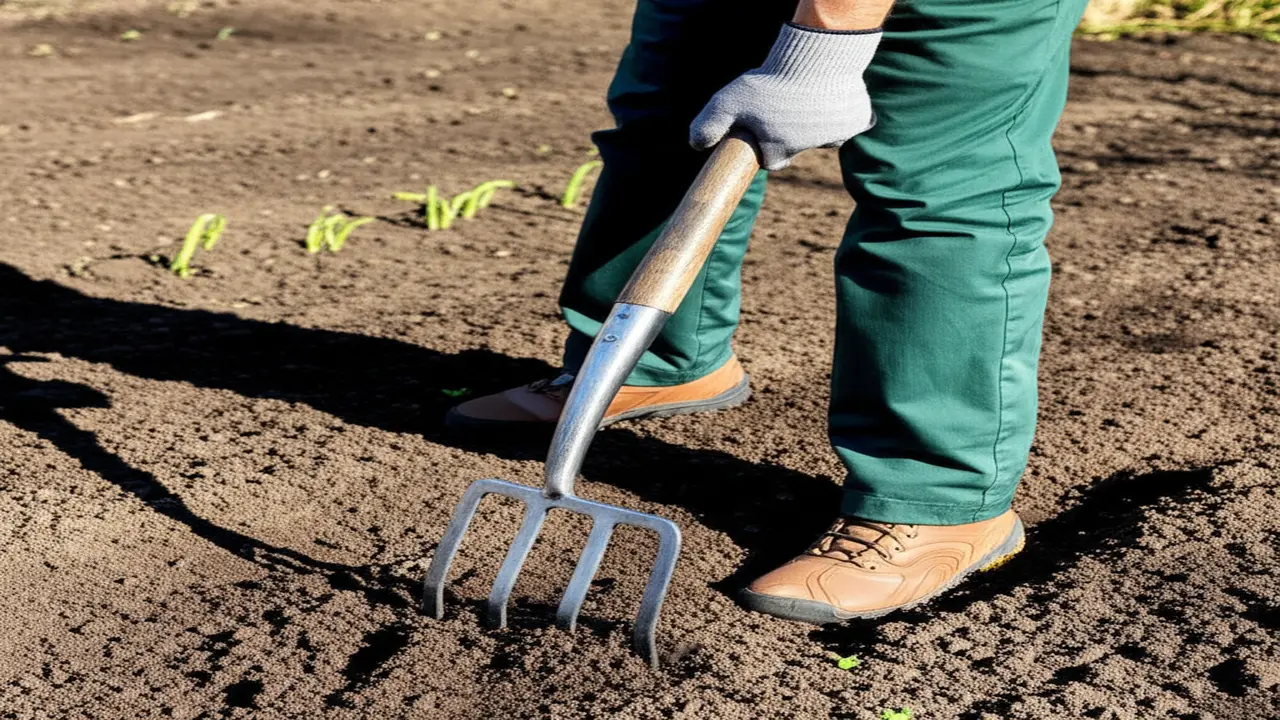
2. Essential Preparation and Safety
Next, assess your work area. Clear away any debris, large rocks, or other potential obstacles. Knowing how to use a garden fork correctly involves more than just muscle. Proper ergonomics will prevent strain. Maintain a straight back, bend at your knees, and use your body weight to drive the fork into the soil. A firm two-handed grip ensures maximum control and leverage. One hand should be at the top of the handle and the other lower down for guidance. These fundamental safety practices are essential for any digging task, a principle we also emphasize in our [garden spade safety tips](https://gardenitemreviews.com/garden-spade-safety-tips/). Taking these steps in 2025 ensures every gardening session is productive and injury-free.
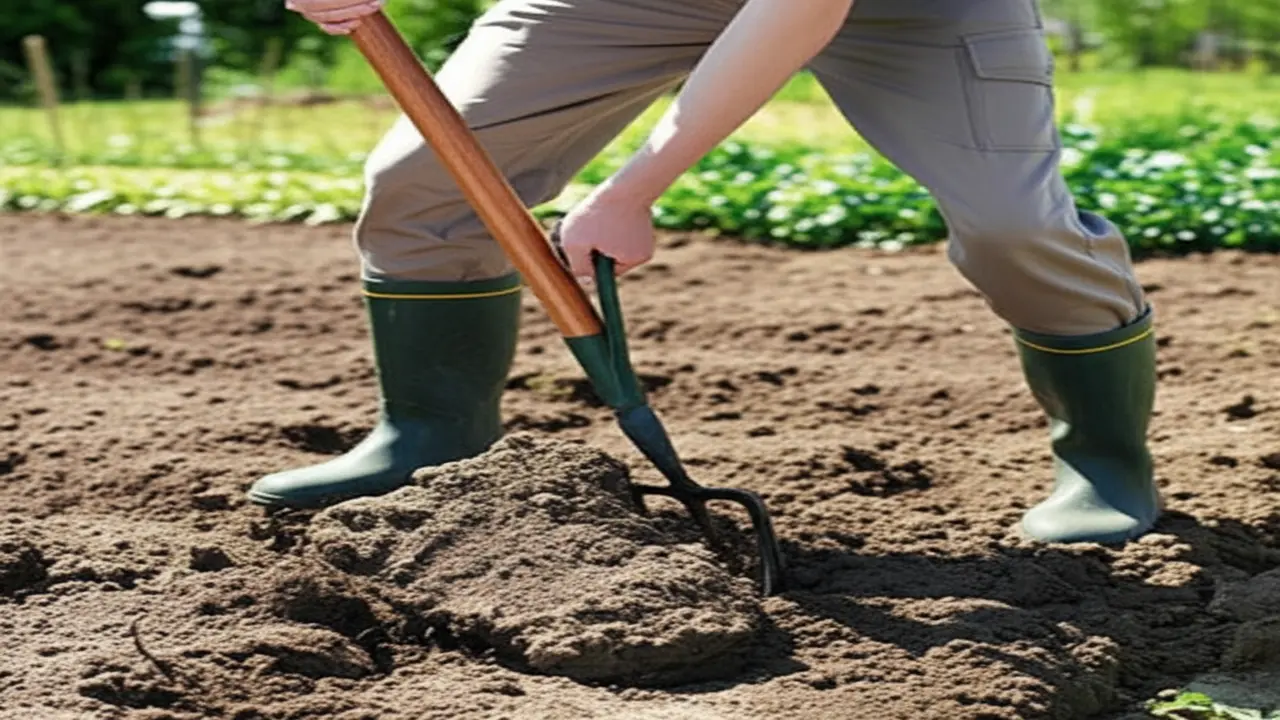
3. Core Fork Handling Techniques
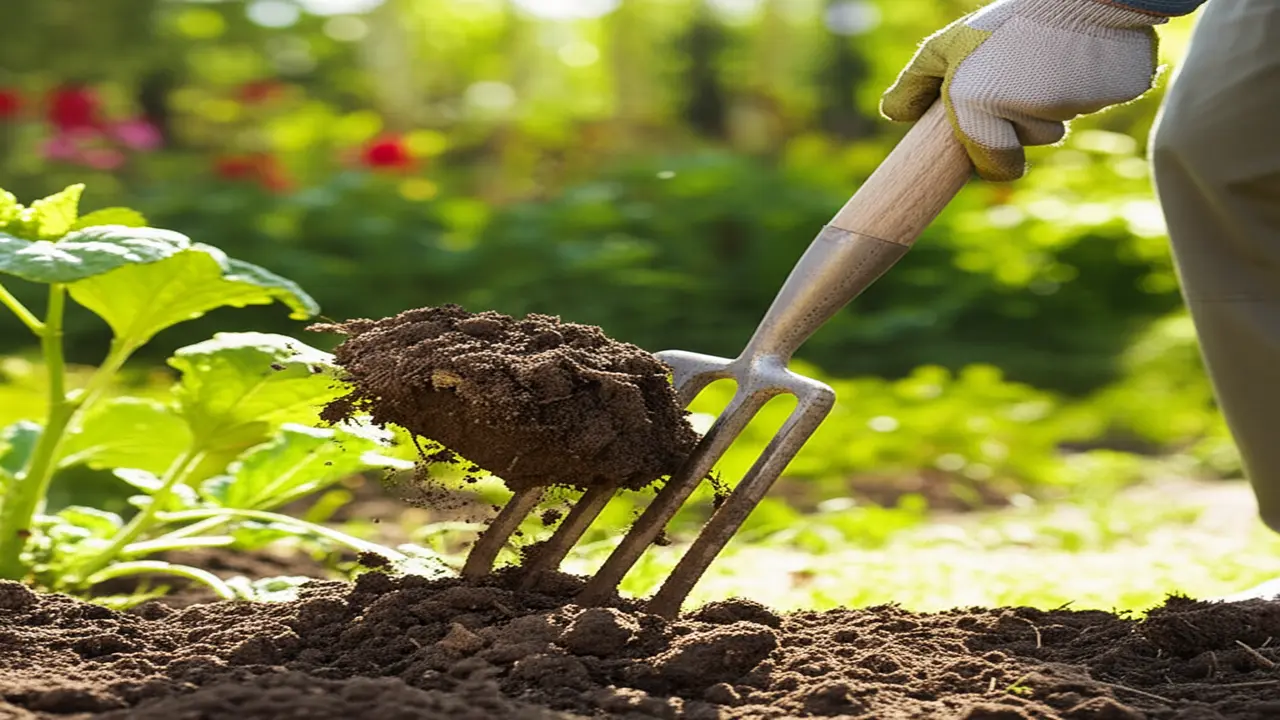
4. Practical Applications in the Garden
Beyond basic tilling, a fork excels at more nuanced jobs:
* Incorporating Amendments: After spreading compost, use the fork to mix it into the top several inches of soil. This ensures even distribution without destroying the natural soil structure.
* Removing Stubborn Weeds: The strong tines are perfect for loosening the ground around deep tap-rooted weeds like dandelions, allowing for complete removal with minimal effort.
* Lifting and Dividing: Carefully slide the fork underneath root vegetables like potatoes or when transplanting perennials to lift the entire root ball with minimal disturbance.
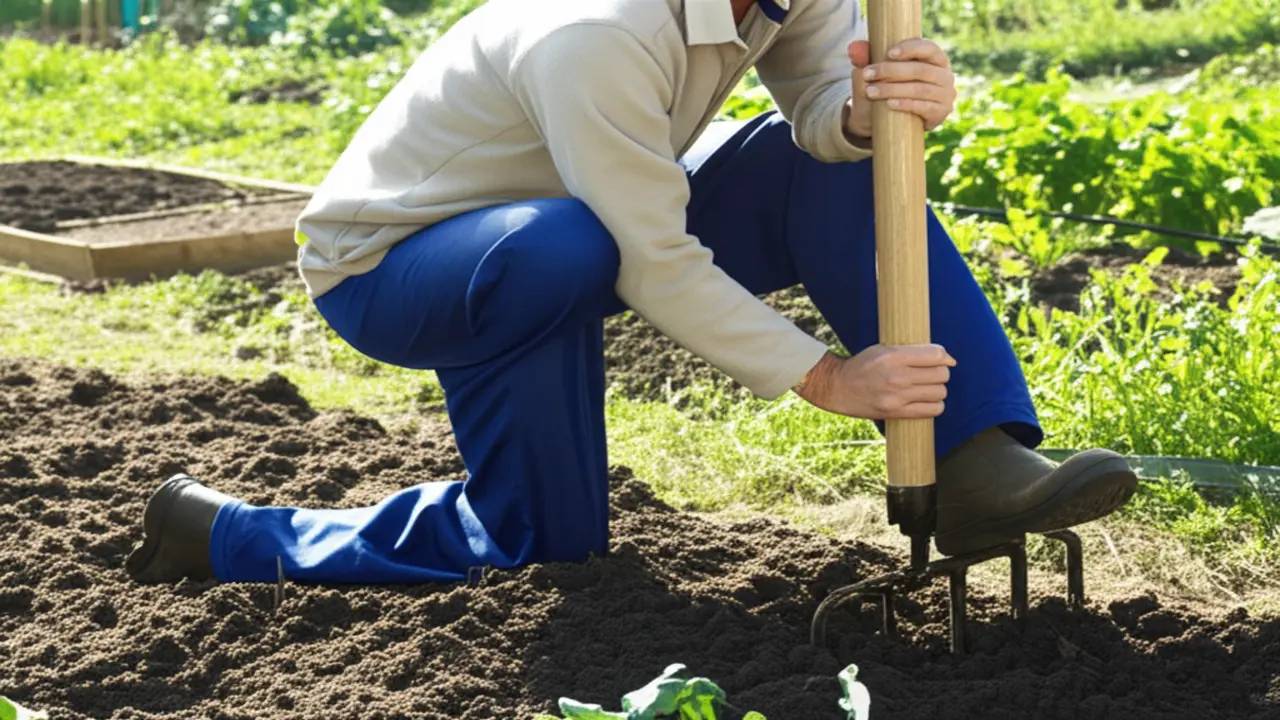
5. Enhancing Efficiency and Preventing Strain
* Work in Manageable Sections: Avoid the temptation to tackle large areas at once. Divide your garden bed into smaller, logical squares. Focus on finishing one section completely before moving on. This method provides a clear sense of progress and prevents the physical and mental fatigue of facing a huge task.
* Use Your Body Weight, Not Your Back: The most common mistake is trying to force the fork into the ground with only your arms. Instead, place your foot firmly on the top edge of the tines and use your body weight to drive the fork into the soil. This leverage is the most critical technique for preventing back strain, similar to the proper [digging spade technique](https://gardenitemreviews.com/digging-spade-technique/).
* Take Regular Breaks: Gardening is exercise. Schedule short breaks every 25-30 minutes to stand up, stretch, and hydrate. This prevents muscle fatigue and keeps you working effectively.
* Keep Your Tines Sharp: A fork with sharp tines cuts through soil with far less resistance. Just as [sharpening garden spade blade](https://gardenitemreviews.com/sharpening-garden-spade-blade/) is crucial for performance, maintaining your fork’s tines makes your work easier and more effective.
6. Common Pitfalls and Troubleshooting
– Using the Wrong Tool for the Job: A common error is treating a garden fork like a shovel or spade for digging into dense, unbroken turf. A fork is designed to loosen, lift, and aerate soil, not for cutting through dense sod. For tasks that require slicing through turf or creating sharp edges, understanding the proper [digging spade technique](https://gardenitemreviews.com/digging-spade-technique/) is essential.
– Poor Posture: Bending at the waist and using your back to lift puts immense strain on your spine. Always keep your back straight, bend your knees, and use your leg muscles and body weight to drive the tines into the ground and pry the soil loose.
– Forcing into Hard Soil: Trying to jam a fork into dry, compacted clay is a fast way to bend tines or snap the handle. If the ground is too hard, water it thoroughly the day before you plan to work. The moisture will soften the soil, making it much easier to penetrate.
– Damaging Roots or Not Going Deep Enough: When aerating around plants or lifting root vegetables, work from the outside of the root ball inwards. Hurrying can lead to piercing roots. Similarly, only pushing the tines in a few inches fails to break up the deeper compacted hardpan layer, which limits drainage and root growth.
7. Tool Care and Longevity
For storage, never leave your fork outside exposed to the elements. A dry garage or shed is the ideal location. Hanging it on a sturdy wall rack is the best practice as it prevents moisture from seeping in from a concrete floor and keeps the sharp tines safely out of the way. Periodically, inspect the fork for any signs of wear, such as a loose handle or bent tines. Addressing these minor issues early prevents them from becoming major problems. These maintenance principles are quite similar for other essential digging tools, as detailed in our guide to garden spade maintenance. This consistent care ensures your fork is always in top condition and ready for work.

